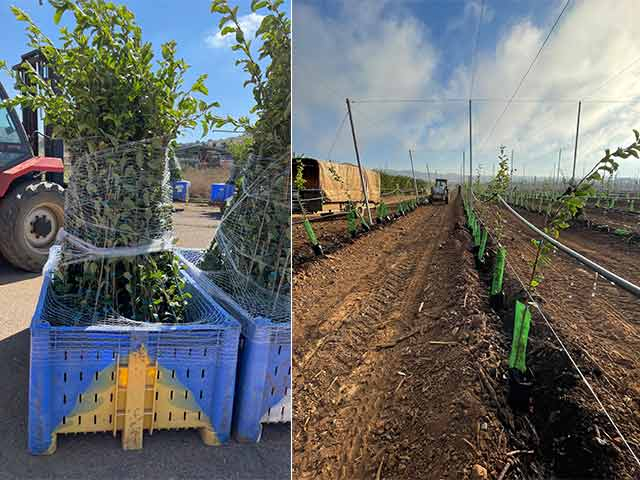The benefits of planting container-grown fruit trees may take some time to realise, and far outweigh the negatives.
Benefits to nurseries of Ellepot system (continued from last issue)
There is no need to move onto new ground, or fumigate if access to new ground is limited.
Trees are easy to work on when grown in Ellepots or black plastic bags and put on racks at waist height, making the whole operation labour-friendly and conforming to OH&S rules.
Trees on racks grown in a shade house are protected from heat and wind.
Tree growth is consistent—no need for growing extra trees to allow for variables in soil, wind, frost and/or animal damage.
Uses about one-third of space compared with the space required to grow the same number of field-grown (liner) trees.
No need for apple rootstock stool beds. Tissue-cultured rootstocks can be used, such as the JM series.
Trees do not need to be dug up, bundled and stored.
Trees can be delivered any time of the year.
To set up a container-grown nursery is expensive, but compares well with a bare-rooted system.
Negatives of container-grown fruit tree.
Need to be more carefully stacked and handled than bare-rooted trees, especially during transport.
Need more space during transport. For example, 50 container-grown trees in a bin would accommodate 300 bare-rooted trees.
Increasing popularity
Planting container-grown fruit trees has become increasingly popular in South Africa and Israel.
Some nurseries and fruit growers in the USA and Australia promote the planting of potted deciduous fruit trees and believe that in 10 years’ time there won’t be a nursery in Australia growing fruit trees in the ground.
See this article in Tree Fruit Nov 2021




















